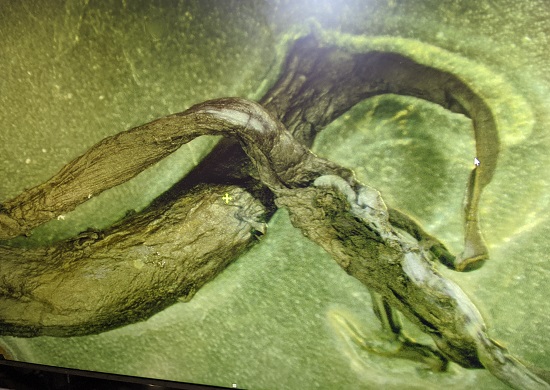Accumulation of ammonia from agriculture linked to cloud formations over Asia
12/17/2021 / By Virgilio Marin

European researchers found that cloud formations over Asia are influenced by ammonia from agriculture. In a paper published in the journal Nature Geoscience, the researchers described how ammonia from livestock and fertilizers rises up into the atmosphere to form a seasonal aerosol layer.
Aerosol layer largely made up of ammonia-based chemical
The Asian tropopause aerosol layer (ATAL) is an accumulation of aerosols (liquids or solids composed of fine particles suspended in gas) that commonly form during the Asian monsoon — a major wind system in the region that seasonally reverses its direction. First observed in 2011, the ATAL hovers seven to 11 miles above the Middle East all the way to the western Pacific Ocean. Prior to the study, however, its composition was unknown.
Now, researchers have found that the ATAL is largely made up of ammonium nitrate, an aerosol widely used in agriculture products. They discovered this after flying a high-altitude aircraft above Asia to observe the region using a satellite and running simulations to study the ATAL’s composition and distribution.
The team’s analysis indicated that crystalline ammonium nitrate is one of the major constituents of ATAL. This solid aerosol forms when liquid ammonium nitrate droplets crystallize at below-zero temperatures in the presence of sulfur-rich aerosols.
Surprisingly, the researchers found that crystalline ammonium nitrate has been everywhere in the upper troposphere (the lowest of the main layers of the atmosphere) since 1997. Scientists previously thought that ammonium nitrate does not exist at such high altitudes because rain quickly washes the precursory ammonia out of the atmosphere. (Related: Can fake rain wash away China’s polluted air? South Korea is going to help them find out.)
Michael Hopfner, a climate scientist at the Karlsruhe Institute of Technology in Germany and the lead researcher of the study, said that the ammonia concentrations they detected in the ATAL were up to fifty times higher than previous measurements.
Ammonia in this part of the sky mainly comes from agriculture, in particular from livestock and fertilizers. During the monsoon season, the wind transports polluted air masses from the land to heights of up to 11 miles. Ammonia then reacts with ambient substances to produce ammonium nitrate, which can influence the formation and composition of clouds.
“With this, we have solved the long-standing puzzle of the composition of ATAL,” Hopfner said. Their findings illustrate that ammonia emitted on the ground affects atmospheric processes and potentially the Asian climate.
Ammonium nitrate facts
Ammonium nitrate is an odorless, almost colorless crystal salt. Farmers commonly use ammonium nitrate as fertilizer to enhance plant growth and provide their crops with a ready supply of nitrogen, an important nutrient for plants.
Ammonium nitrate is also commonly used to manufacture explosives. It is mixed with fuel oil and detonated by an explosive charge. Though it is not combustible on its own, it can explode when put under extreme heat and pressure. Last year’s Beirut blast was caused by an ammonium nitrate explosion.
Exposure to ammonium nitrate can negatively impact a person’s health and the environment. An ammonium nitrate explosion produces massive amounts of nitrogen oxide, a red, foul-smelling gas that is commonly found in polluted urban air. Nitrogen oxide can irritate the lungs and worsen preexisting respiratory conditions.
Toxic chemicals like ammonium nitrate pose a serious threat to the environment as well as the health of humans. Reducing the use of these chemicals is important for mitigating pollution and preventing diseases.
Learn more about the dangers of using ammonium nitrate and other similar chemicals at Toxins.news.
Sources include:
Submit a correction >>
Tagged Under:
aerosols, agriculture, ammonia, ammonium nitrate, Climate, discoveries, environment, Fertilizers, livestock, research, toxic chemicals, toxins
This article may contain statements that reflect the opinion of the author
RECENT NEWS & ARTICLES
COPYRIGHT © 2017 RESEARCH NEWS




















